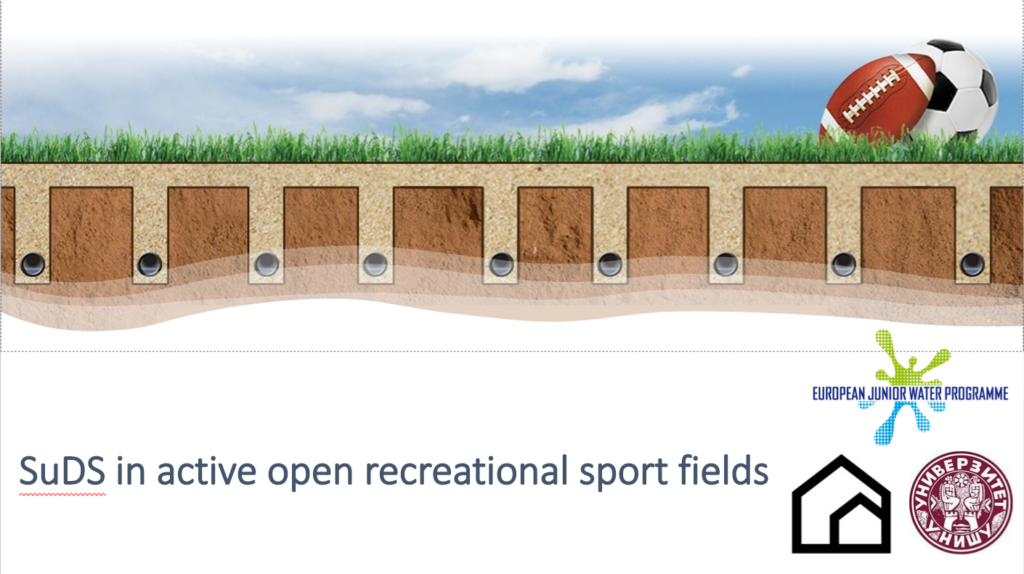Sports and recreational facilities in urban areas hold significant potential for sustainable drainage systems (SuDS) and Eco-Oriented urban Approaches (EOA). Synergies of these approaches have multiple benefits both separately or combined in a “treatment train” to be integrated at both macro and micro levels. Conclusions from a project with EJWP2 and the University of Niš in Serbia on these elements of urban planning are being presented in the EJWP2 Training Week in Colmar, France, from 14-18 March.
“Active open recreational space in urban stormwater runoff management system,” is the name of the project that addressed new development and retrofitting recreational spaces. In this project, the focus was on outdoor sports grounds and fields.
During the research, guidelines were set on which goal would include the most favorable elements related to the type of sports field. The assessment tool in the paper was created through the European Junior Water Programme (EJWP) for the University of Niš. The assessment tool follows the framework of the SuDS manual, but has been modified to specifically assess urban sport fields.
“I am proud of my group, because we have shown that we can deal with topics that are unfamiliar in our backgrounds. So far this was our most complex project, because of the multidisciplinary work involved. We put ourselves in positions of architect, civil engineer and environmental engineer to achieve intended results,” said Borko Radivojević, EJWP2 Participant from Serbia.
Challenges faced and results achieved
Considering that nature-based solutions are increasingly applied in civil engineering and architecture for residential buildings, this has been extended to other parts of construction. There are several sports facilities in the world that apply sustainable drainage systems (drainage, infiltration, water storage and water reuse) in order to protect against floods. The challenge was to find such sports and recreational fields and learn from their example, then create the assessment tool to support decision making of the SuDS elements. Criteria included quantity, quality, amenity and biodiversity. This project can assist planners and contribute in educational initiatives.
The faculty of civil engineering and architecture at Niš University have a long tradition of projects related to urban water management from architectural, urban planning and hydraulic engineering perspectives. The group of staff and students in the project exchanged ideas that could lead to future cooperation in similar fields. The interaction of professionals working in different frameworks on the same topic can also be valuable for understanding improvement potential.
“Topics similar to the one addressed in this project are continuously in focus of the research conducted at our faculty at all study levels. This project can thus provide insight to our students about the results achieved by an international team and potentially understanding of other students’ perception and concept of the problems, shaped by their interdisciplinary educational background,” said professors Dr. Borislava Blagojević and Dr. Ljiljana Vasilevska from the University of Niš in a joint statement about the project.

